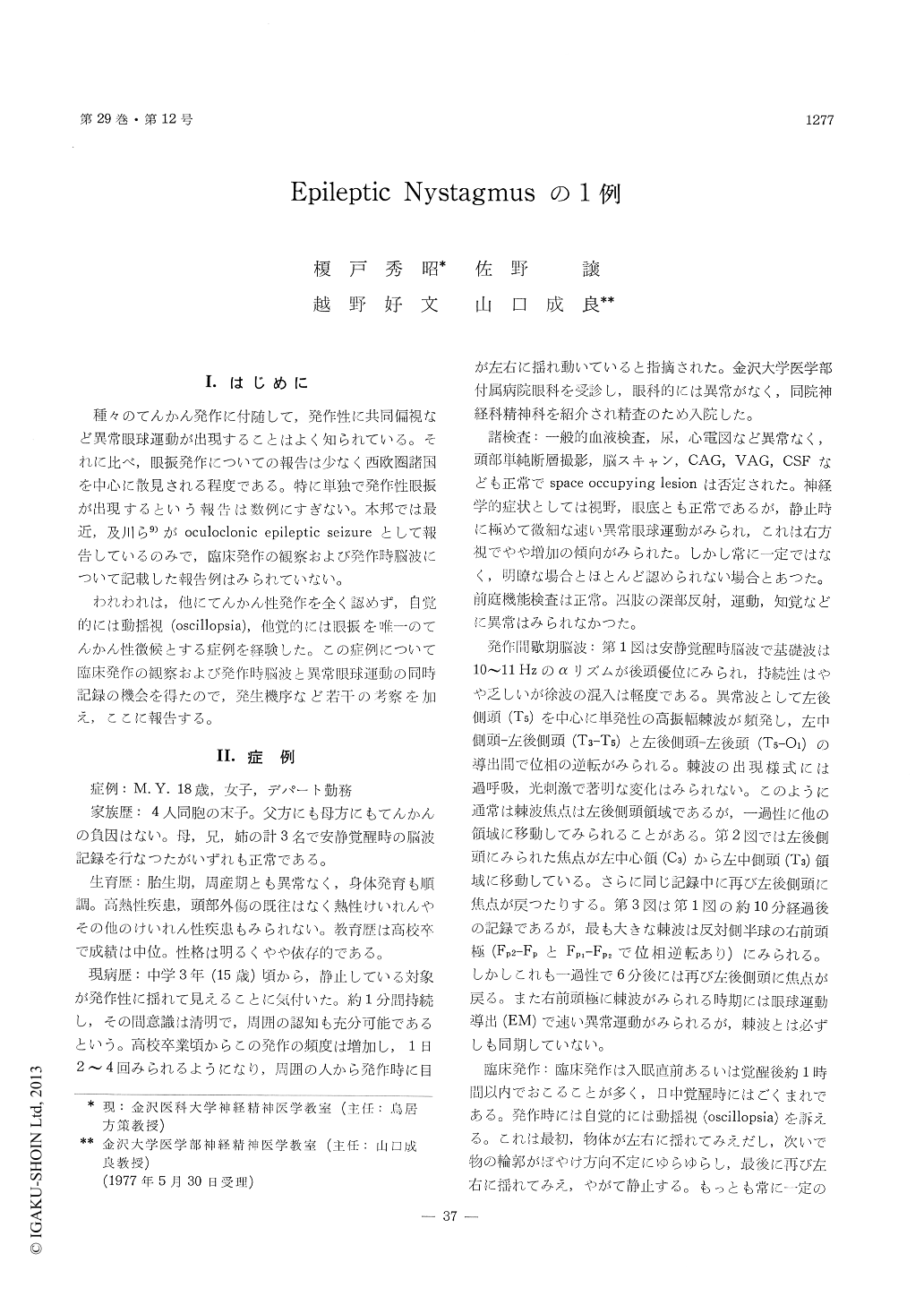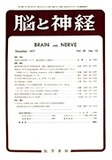Japanese
English
- 有料閲覧
- Abstract 文献概要
- 1ページ目 Look Inside
I.はじめに
種々のてんかん発作に付随して,発作性に共同偏視など異常眼球運動が出現することはよく知られている。それに比べ,眼振発作についての報告は少なく西欧圏諸国を中心に散見される程度である。特に単独で発作性眼振が出現するという報告は数例にすぎない。本邦では最近,及川ら9)がoculoclonic epileptic seizureとして報告しているのみで,臨床発作の観察および発作時脳波について記載した報告例はみられていない。
われわれは,他にてんかん性発作を全く認めず,自覚的には動揺視(oscillopsia),他覚的には眼振を唯一のてんかん性徴候とする症例を経験した。この症例について臨床発作の観察および発作時脳波と異常眼球運動の同時記録の機会を得たので,発生機序など若干の考察を加え,ここに報告する。
A case of isolated epileptic nystagmus was re-ported.
Case : M. Y. A 18-year-old female. She was free from any diseases which might provoke the con-vulsive disorder in her early history. When 15-year-old, she began to see that the objects had oscillated abruptly in her sight. During this attack, no motor activity was recognized and her consciousness was clear. Neurologically, she has no pathologic sign except for the occasional fine ocular movement at rest. Brain scanning, CAG, VAG and CSF are not remarkable.
Interictal EEG : single big spikes are numerous over the left post-temporal area. Occasionally, the EEG focus migrates to the left central area or to the frotalpole from the left post-temporal area.
Clinical seizure : she experiences oscillopsia sub-jectively during her seizure and objectively jerking nystagmus to the right and pendular nystagmus are obserbed but no conjugate deviation and head deviation.
fetal EEG : Initially, burst of poly spikes occured in the post-temporal and occipital area is followed by the so-called "electrically silent phase" in which the EEG activities are depressed and spike dis-charges disappear, but during this phase, the seizure nystagmus starts. Secondly, low voltage rhythmic seizure discharges of β band appear and, gradually, their amplitude increase and alter to the a band's rhythmic wave. The seizure, finally, terminates in the form of continuous rhythmic spikes.
Therapy : Carbamazepine was used 400 mg/day. Number of clinical seizures decreased and, electro-encephalographically, the single spikes decreased remarkably in their frequency and amplitude. The drug was effective.
The authors concluded that epileptic nystagmus of this case might be originated from the occipital eye field (Area 19, 18, 17) and also suspected that the oculomotor system, involved the frontal eye field (Area 8), might be unstable to the epileptic changes.

Copyright © 1977, Igaku-Shoin Ltd. All rights reserved.


